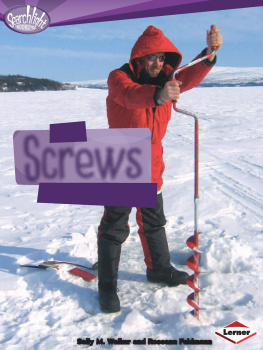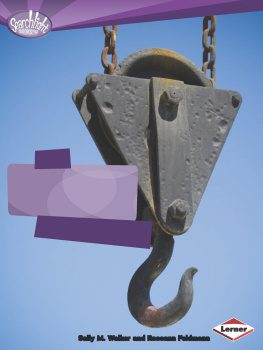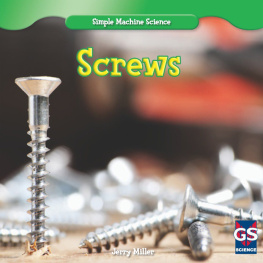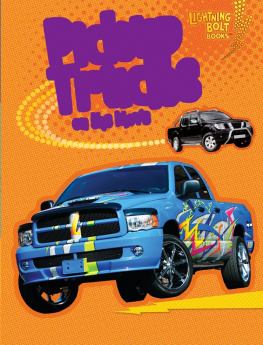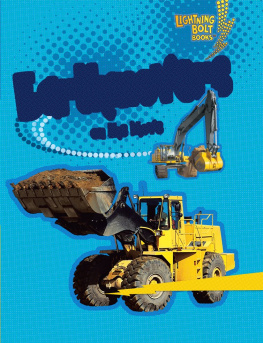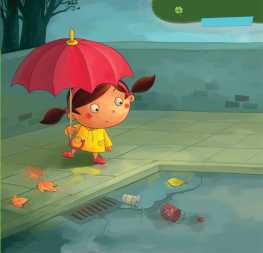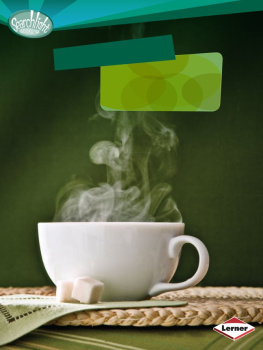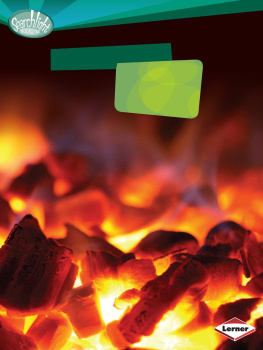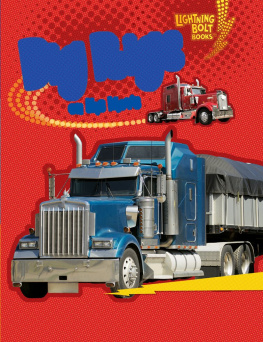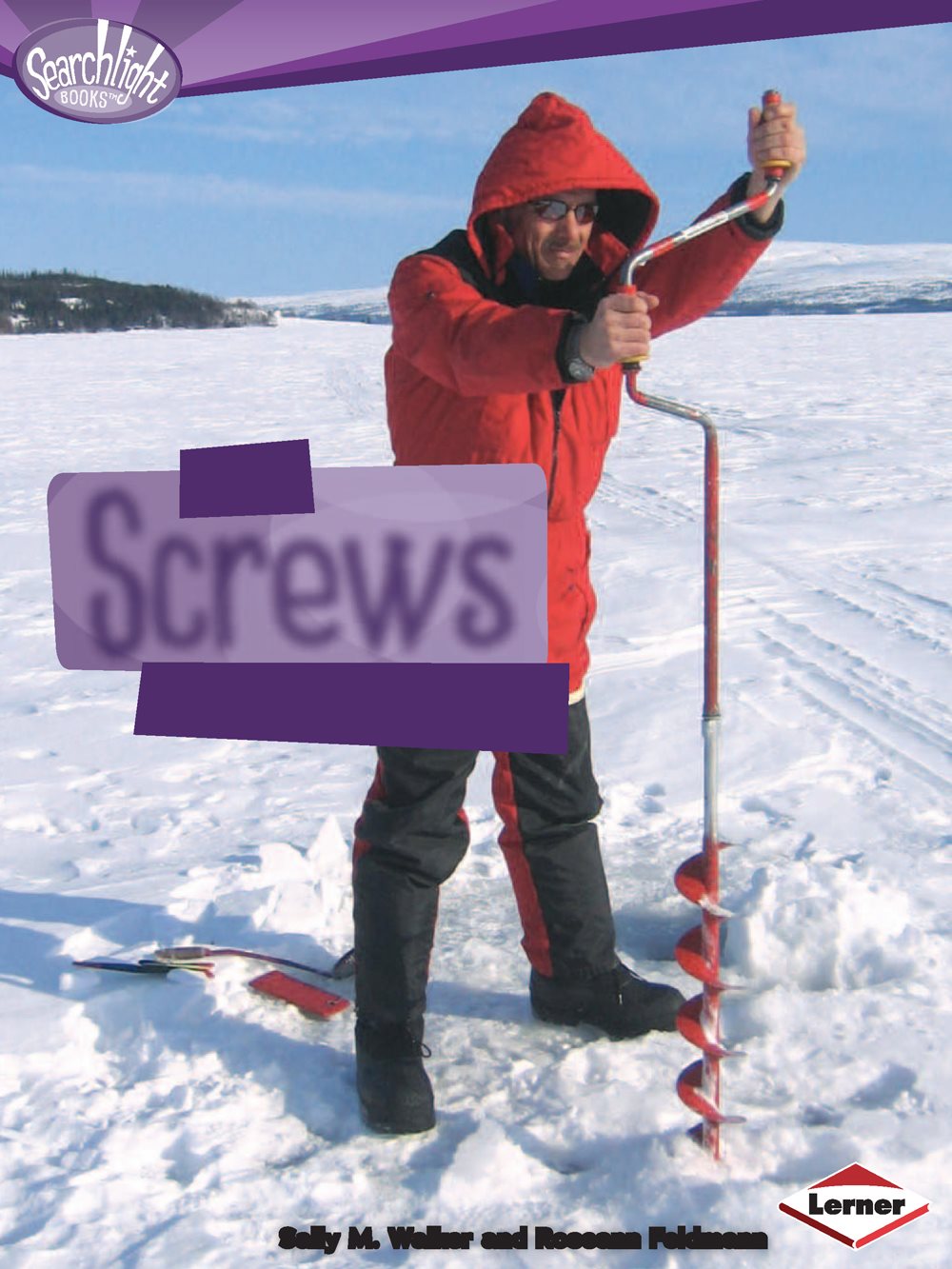Put
Screws
to the Test
Sally M. Walker and
Roseann Feldmann
For Beth Hirsch, friend forever, even
when I cant remember! RF
Copyright 2012 by Sally M. Walker and Roseann Feldmann
All rights reserved. International copyright secured. No part of this book may be
reproduced, stored in a retrieval system, or transmitted in any form or by any means
electronic, mechanical, photocopying, recording, or otherwisewithout the prior written
permission of Lerner Publishing Group, Inc., except for the inclusion of brief quotations in
an acknowledged review.
Lerner Publications Company
A division of Lerner Publishing Group, Inc.
241 First Avenue North
Minneapolis, MN 55401 U.S.A.
Website address: www.lernerbooks.com
Library of Congress Cataloging-in-Publication Data
Walker, Sally M.
Put screws to the test / by Sally M. Walker and Roseann Feldmann.
p. cm. (Searchlight booksHow do simple machines work?)
Includes index.
ISBN 9780761353232 (lib. bdg. : alk. paper)
1. ScrewsJuvenile literature. I. Feldmann, Roseann. II. Title.
TJ1338.W35 2012
621.882dc22 2010035552
Manufactured in the United States of America
1 DP 7/15/11
Contents
Chapter
WORK
You work every day.
At home, you work in
the kitchen. At school,
you sharpen pencils.
It may surprise you to
learn that you also work
during recess and at lunch.
Playing and eating are
work too!
You do work when you sharpen a pencil. Are you working when you play or eat?
Work = Using Force
to Move an Object
When scientists
use the word work,
they dont mean the
opposite of play. Work
is using a force to
move an object from
one place to another.
Force is a push or a
pull. You use force to
do chores, to play, and
to eat.
These children are using force to climb a rope ladder.
Sometimes you push
or pull an object to
move it to a new place.
Then you have done
work. The distance that
the object moves may
be long or short. But
the object must move.
Opening a jar of peanut
butter is work. Your
force moves the lid.
This girl has used force to open the lid of a jar. She has done work.
Here the girl is using a lot
of force to try to turn a lid.
But the lid is not moving.
Is the girl doing work?
Some lids are too hard to open. You have done no
work if you cannot turn the lid. Its not work even if you
try until your wrist feels like rubber. No matter how hard
you try, you have done no work. The lid has not moved.
Chapter
MACHINES
Most people
want to make
doing work easy.
Machines are tools
that make work easier.
Some of them make
work go faster too.
An electric drill has many moving parts. What do
we call a machine that
has many moving parts?
Complicated Machines
Some machines have many moving parts. We call them
complicated machines. It may be hard to understand
how complicated machines work. Electric drills and
clothes washers are complicated machines.
A clothes washer is a complicated machine.
Simple Machines
Some machines are
easy to understand.
They are called simple
machines. Simple
machines have few
moving parts.
Simple machines
are found in every
home, school, and
playground. They are
so simple that most
people dont realize
they are machines.
This girl is turning a wheel. A wheel is a simple machine.
Chapter
WHAT IS
A SCREW?
A screw is a simple machine.
A screw looks like a nail with
ridges. The ridges on a screw are
called a thread.
A screw is a simple machine that looks like a nail. What is the difference between a nail and a screw?
A hammer pushes a nail into wood. Your fingers push
a pin into fabric. But you dont push a screw. Instead, a
screw is turned. The
thread on a screw
pulls the screw into
the material. The
material can be
wood or metal. It
can be Styrofoam or
plastic. It can even be
concrete or dirt!
A screwdriver is used to turn a screw into a piece of wood.
A screw seems to have many threads. But it really
has just one thread. You can prove this.
YOU WILL NEED A SHEET OF PAPER,
A RULER, A PENCIL, A CRAYON OR A
MARKER, TAPE, AND A SCISSORS.
What You Do
Make a dot at one corner of the paper. Measure
inches (8 centimeters) from the dot along one edge of the
paper. Make an X. Next, measure inches from the dot
along the other edge of the paper. Make another X.
Use a ruler to measure inches from one corner of your sheet of paper.
Your line should look like this
when you connect the two marks.
Connect the two marks by
using a colorful crayon or marker
and the edge of the ruler. Your line will be slanted.
Use the
scissors to cut
just outside the
line. You will have
a triangle with

